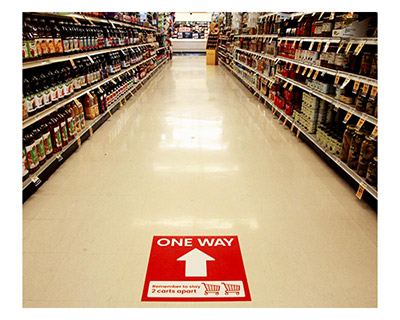Businesses navigating operations through the COVID-19 pandemic, have seen success and failures. COVID-19 pandemic is still a concern for businesses across the United States and it could be a long time before daily operations return to “business-as-usual”. Business success is dependent on setting new standards for the safety of both employees and customers. There are tips everywhere on how to keep businesses clean. But what about daily operations and finding the right alternatives for the new “business norm”. There are however some simple tips to help businesses operate during the COVID-19 pandemic.
Rule #1: Avoid Stupid Rules
Sometimes, rules have unintended consequences and could have negative results. Work with your customers to understand their needs for safety and build with empathy. These are rules that show action but have no tangible value to you, the merchant or your customer. They feel good but don’t address the problem.
Let’s start with social distancing. Social distancing can be accomplished via time and space.
Extending store or office hours
Reducing hours of operation can force more customers into a place in a smaller time-box. Extending hours of operation can provide more options to alleviate congestion. Therefore, it’s important to note that reducing store or office hours force more people into tighter time slots. Maintain your normal business hours. You may even want to go against conventional wisdom and extend hours to help disburse the number of customers at your location during a given time period. Give your customers more options will show empathy and flexibility to meet their needs.
Avoid the Queue
Next, queue management is important but needs to be weighed against a customer’s waiting time in line. Some businesses have learned that their new rules just don’t work. When a popular grocery store chain introduced a 10 customer at a time rule; it seemed to backfire. Their store had customers in lines wrapped around the outside building essentially playing the virus telephone game, passing germs up and down the line while people waited. Their physical store size would have allowed for greater social distancing if more people were allowed in at a time. Forcing customers to wait in long lines doesn’t necessarily mean social distancing. Think through the tradeoffs of creating queues versus allowing separation via the physical distance within a location.
Many stores have implemented one-way aisles to shop, but how has it helped the epidemic? In some cases, customers have complained of it causing people to congregate in aisles longer. For customers that want to quickly get in and out of a store; it can make shopping more difficult. When creating new office or store rules; make sure there is a reason to implement it.
Use common sense when creating rules and consider the potential impacts on employees and consumers.
Rule #2: Pre-plan for Your Customer’s Visit
Electronic Documents
Make documents available online or send them by email ahead of the visit. Don’t make customers come in to sign documents or fill out paperwork. From healthcare to financing companies; online documents can reduce a patients or customers time in an office. As a business, do as much as you can to help customers prefill and complete the required forms ahead of the visit. No need to have customers sitting in a waiting room to complete a form that is available online.
Space Out Appointments
Don’t just space out appointments and have a waiting room full. Space out appointments where customers are not stuck in a room waiting together. Appointments can run longer than expected, so account for it.
Rule#3: Go Digital
Adding on to preparing for a customer’s visit, almost everything can be done digital these days. Work from home has proven extremely successful. Doctor’s are accomplishing televisits to reduce in office foot traffic. Businesses like Carvana have taken advantage of auto sales and financing online. Your business can too. Rethink your processes and identify areas to digitize. This will reduce overhead long term, improve availability, and increase customer safety.
Accept Payment Remotely
There are many options available to accept bill payments over-the-phone, through a website, payment kiosk, or even through a mobile payment app. For those customers that still use checks, mobile bill payment apps can offer check capture technology. Provide with customers contact-free solutions for paying bills, copayments, or insurance premiums. Are you concerned that you will miss out on potential payments or revenue? Don’t be, consumers are accustomed to completing transactions online. In 2019, the CFPB reported over 60% of all adults and over 80% of individuals under 25 have completed a payment on their mobile device. Be ready to meet your customers where they are at with a payment solution that fits on their mobile device.
Finally, Get the Message Out
If your business is going to make a change, let customers know. Let customers know that your business is going digital and offers remote payment options. Send a quick message that shows the options available and how to use them. From billing inserts, social media posts to sending emails; notifying customers has never been easier. Let your customers know you are able to provide flexible solutions that ensure their safety and allow for business to commence.
Contact a PaymentVision expert today to answer questions about accepting secure remote payments.











